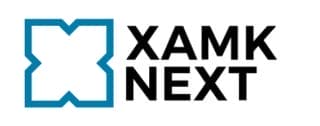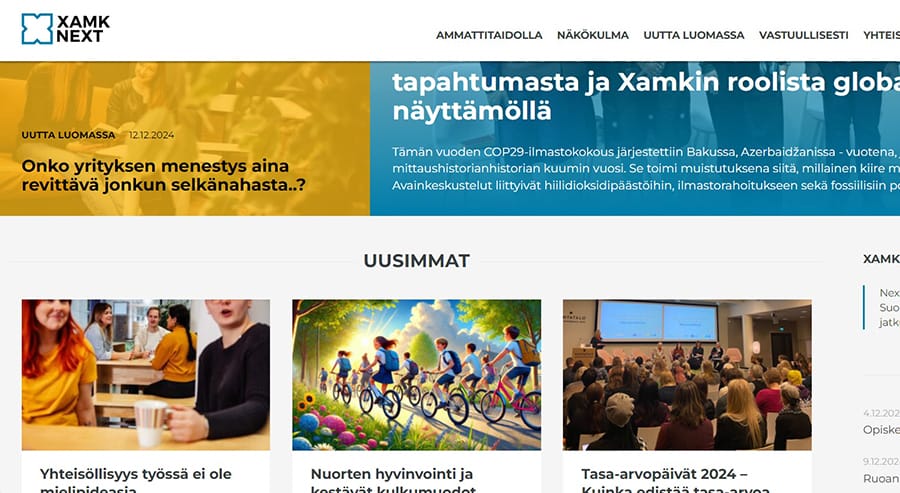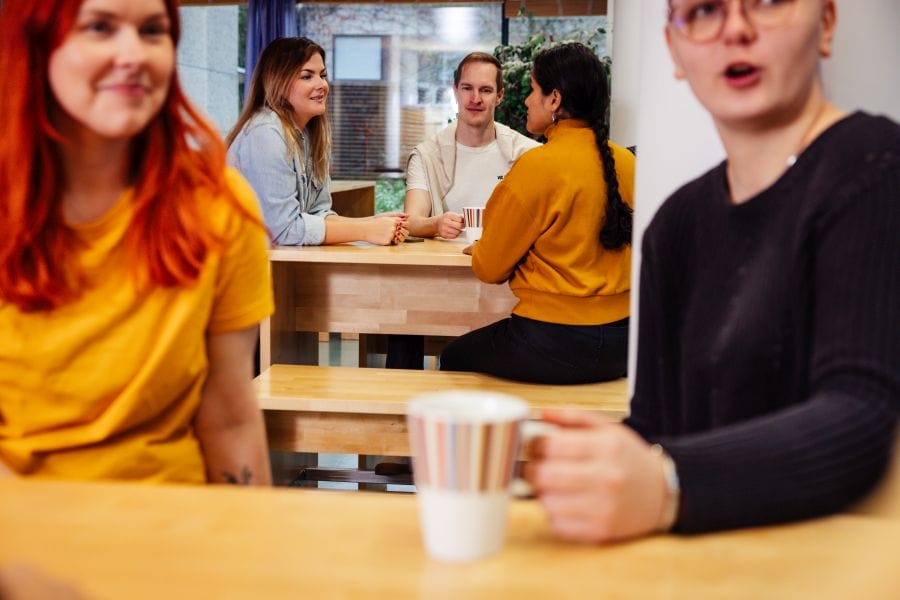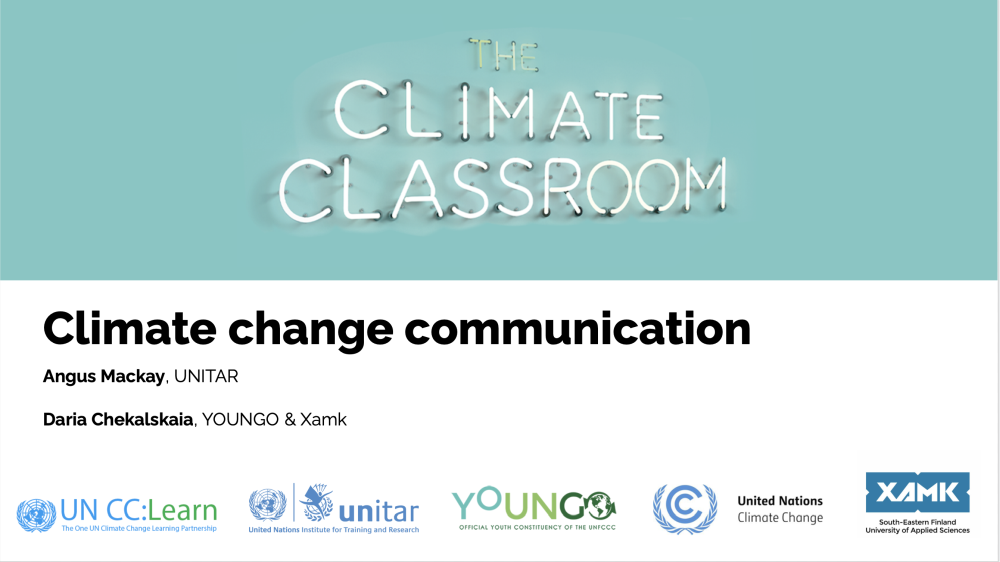Classroom for the sake of the planet

Xamk supports the implementation of UN Sustainable Development Goals and strealine it througout all its activities, from strategic planning to daily work. In a performance agreement made with the Ministry of Education and Culture for 2021-2024, Xamk has committed to reaching carbon neutrality as early as in 2025.
As of now all campuses have joined WWF Green Office network and Xamk has signed as the first Finnish university of applied sciences, UN Global Compact which seeks to promote responsible and sustainable business all over the world.
Xamk co-hosts one of the Climate Classroom @COP27
In November, Xamk participated in the Climate Classroom initiative that directly relates to COP27, the annual Conference of the Parties of the United Nations Framework Convention on Climate Change that took place in Sharm el-Sheikh, Egypt.
The Climate Classroom – https://www.uncclearn.org/climate-classroom-cop27-climate-change-communication/ – @COP27 is an innovative learning experience designed to help attedees get quickly up-to-speed on key climate issues.

It is developed by the UN Climate Change Learning Partnership, also known as UN CC:Learn, that helps countries build the knowledge and skills they need to take action on climate change. Throughout COP27, the UN CC:Learn team and diversity of field experts delivered free online 45-minute classes that expose and introduce learners to a range of climate change topics – allowing delegates, professionals, and other interested parties to follow and contribute to climate discussions.
Xamk co-hosted The Сlassroom with Unitar, Youth Constituency of UNFCCC and UN CC:Learn on Climate Change Communication. The Class was opened by Angus Mackay, the Director of UNITAR’s Division for Planet, and delivered by Daria Chekalskaia, Xamk’s alumni and Edufication Production Assistant.
She graduated as an environmental engineer and currently coordinates the production of online micro courses at Edufication, facilitates capacity building programs for young people on climate finance topics at Climate Investment Funds and a member of the youth delegation to several UN conferences. Daria is passionate about climate communication and reaches thousands with her approach of making climate challenges more actionable and less abstract.
Insights from Climate Change Communication Classroom
The premise of the Class was simple. Effects of climate change differ from region to region, the same way as the local stories.
We need to amplify all the different perspectives and voices of people around the planet and bring out their stories to raise awareness, call for action and empower for change.
Climate change communication comes in many forms: from discussions between friends around adaptation to weather changes in the hometown to multimedia resources presenting latest IPCC findings. To share your own climate story and make a difference, you do not need to be a journalist or a climate expert. Anybody can share their local challenges and possible solutions just using a smartphone.
In this Classroom some practical tools to help participants to get started were explored. The discussion revolved around how to leverage the latest trend – short videos – to reach thousands, engage the public and empower the audience.
Here are the 5 insights from the Classroom on climate change communication in social media that participants took away:
1. To support lifelong learning, we can leverage social media. Edutainment allows wider reach and sometimes better inclusion. Not all education processes can be and should be made fun, but there is a place for climate change communication to happen within social networks.
2. Climate solutions are buried in PDFs, short videos, on the other hand, can bring up those ideas and solutions, make it related to people and get shared across thousands of people
 |
 |
 |
3. You do not need to have 10 PhDs to get started. The social media makes it so that everybody can create content and package it for others to see. Yes, there is some learning and adaptation involved, but it is worth all the efforts.
4. Short videos are there, does not matter if you like it or not. So why not adapt to the latest trend and format and use it to share about what’s dear to your heart?
5. To create a meaningful message that would be relatable, actionable, and simple enough to understand, start with defining the main message and call to action. What is it you want people to remember? What is it you want them to do? Then start asking yourself one simple question: «So what?». So what if coral reefs are dying because of climate change? So what if it affects local communities, how does it relate to people from another part of the world? So what if there aren’t any more fish? «So what?» allows you to brainstorm which arguments are strong enough to be included in your communication and expands context to make the idea clearer and more actionable.
As a summary, let’s take the words of one of the participants: ”I propose that while the majority of our communication is targeted at policy makers, let us also use our efforts to drive community impact. Power lies with local communities. With enough local communities taking action, the policy makers will start to pay attention”.




